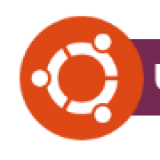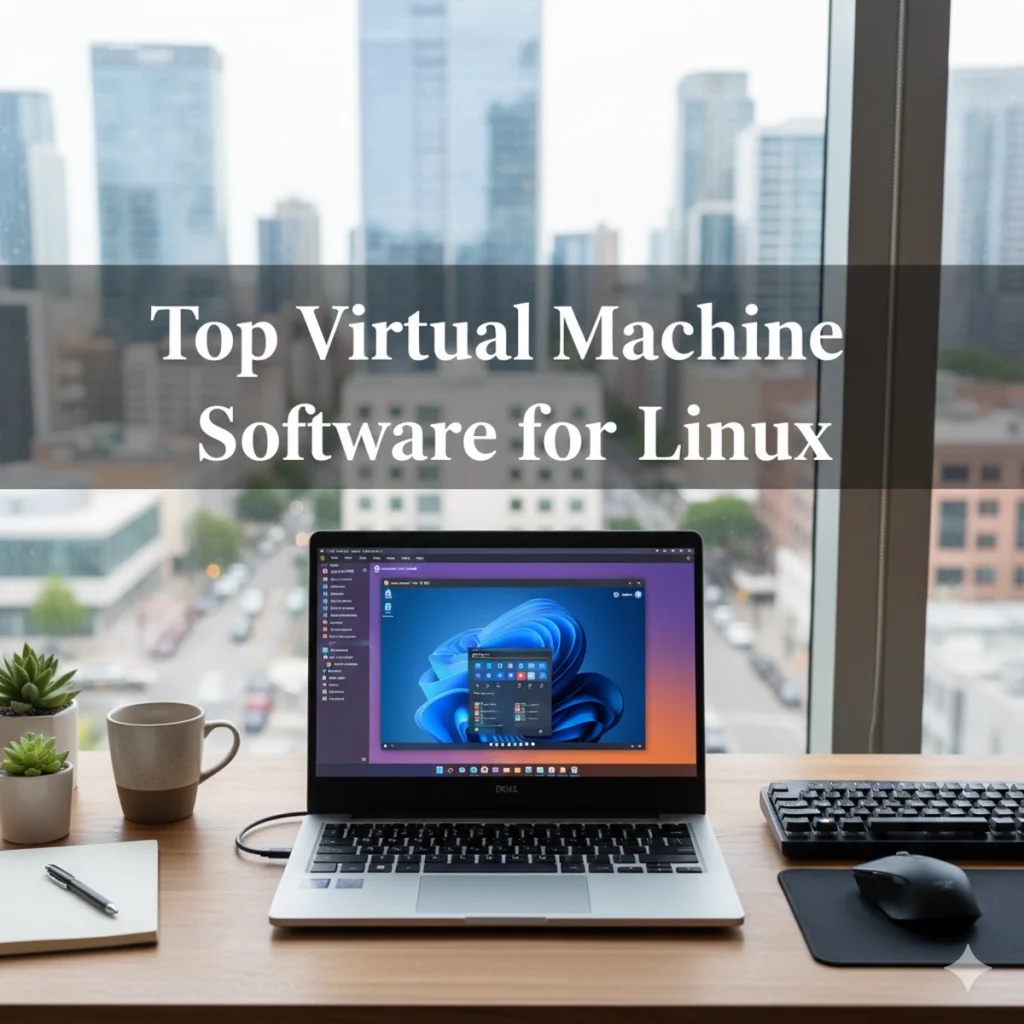Running multiple operating systems on your Linux machine has never been easier. These powerful virtualization tools let you test different distros, run Windows applications, or create isolated development environments without leaving Ubuntu.
In 2025, virtualization technology continues to evolve with better performance, enhanced security, and more user-friendly interfaces.
Whether you’re a developer, system administrator, or casual user, there’s a perfect VM solution for your needs.
If you’re looking for the best way to run virtual machines on Linux, this list of the best virtualization platforms will help you find the right tool for your projects.
We love hearing from our readers! If you have any questions or feedback, please feel free to leave a comment below or contact us directly.
Top Virtual Machine Software for Linux in 2025
| Software | Best For | License | Difficulty |
|---|---|---|---|
| VMware Workstation Pro | Professionals & Developers | Free (Personal & Commercial) | Intermediate |
| Oracle VirtualBox | Beginners & Desktop Users | Open Source | Easy |
| KVM (Kernel-based VM) | Servers & Power Users | Open Source | Advanced |
| QEMU | Cross-architecture Development | Open Source | Advanced |
| Proxmox VE | Enterprise & Homelabs | Open Source | Intermediate |
| GNOME Boxes | Quick Setup & Simplicity | Open Source | Very Easy |
| Virt-Manager | Desktop KVM Management | Open Source | Intermediate |
#1. VMware Workstation Pro
VMware Workstation Pro remains the gold standard for professional virtualization on Linux, offering unmatched performance and feature richness for developers and IT professionals.
VMware Workstation Pro Key Features:
- Advanced snapshot capabilities with multiple restore points
- Seamless integration with vSphere and cloud environments
- Superior 3D graphics support for DirectX 12 and OpenGL 4.9
- Enhanced security with encrypted VMs and secure boot
- Container and Kubernetes support via vctl
- Cross-platform VM compatibility
Why you might like this: Perfect for professionals who need robust features, excellent stability, and enterprise-grade capabilities for development and testing.
⭐ Major Update for 2025:
VMware Workstation Pro is now completely free for personal and commercial use, offering the most comprehensive feature set for power users.
Quick tip: Use linked clones to create space-efficient copies of VMs for testing different configurations.
#2. Oracle VirtualBox
Oracle VirtualBox is the most popular free and open-source virtualization solution, perfect for beginners and anyone needing cross-platform compatibility without the cost.
Oracle VirtualBox Key Features:
- Completely free and open source
- Cross-platform (Windows, Linux, macOS, Solaris hosts)
- Guest Additions for enhanced performance and features
- Snapshot trees for complex VM state management
- Extensive guest OS support
- Seamless mode for integrating host and guest applications
Why you might like this: Ideal for students, hobbyists, and anyone who wants a reliable, free virtualization solution with great community support.
Installation is straightforward via the terminal:
sudo apt update
sudo apt install virtualbox virtualbox-ext-packQuick tip: Install the Extension Pack to enable USB 2.0/3.0 support, disk encryption, and remote display functionality.
#3. KVM (Kernel-based Virtual Machine)
KVM is Linux’s native virtualization solution, built directly into the kernel for maximum performance and efficiency, making it the foundation for most enterprise and cloud virtualization.
KVM Key Features:
- Built into the Linux kernel since version 2.6.20
- Near-native performance through hardware virtualization extensions
- Strong security through SELinux and sVirt integration
- Live migration capabilities for running VMs
- Memory overcommit and thin provisioning
- Best performance for Linux-on-Linux virtualization
Why you might like this: Essential for system administrators, cloud engineers, and anyone needing the highest performance virtualization on Linux.
Install KVM and its essential management tools with this command:
sudo apt update
sudo apt install qemu-kvm libvirt-daemon-system libvirt-clients bridge-utilsQuick tip: Verify your CPU supports hardware virtualization with egrep -c '(vmx|svm)' /proc/cpuinfo (should return > 0).
#4. QEMU
QEMU is a versatile open-source machine emulator and virtualizer that excels at cross-architecture virtualization, making it perfect for developers working with embedded systems or multiple CPU architectures.
QEMU Key Features:
- Full system emulation for multiple architectures (ARM, RISC-V, x86, etc.)
- Can work standalone or with KVM for hardware acceleration
- User-mode emulation for running foreign binaries
- Extensive device model library
- Snapshot and migration capabilities
- Integration with other tools like libvirt
Why you might like this: Perfect for embedded developers, cross-compilation testing, and anyone needing to emulate non-x86 architectures.
Get QEMU installed on your system using apt:
sudo apt update
sudo apt install qemu-system qemu-utilsQuick tip: Use qemu-system-x86_64 -accel kvm to enable KVM acceleration for near-native x86_64 performance.
👉 Get QEMU
#5. Proxmox Virtual Environment
Proxmox VE is a complete, open-source server management platform that combines KVM-based virtualization with LXC container technology in a single web-based interface.
Proxmox VE Key Features:
- Web-based management interface
- Integrated KVM VMs and LXC containers
- Cluster management for multiple nodes
- Built-in backup/restore and high availability
- Software-defined storage and networking
- Role-based access control
Why you might like this: Ideal for homelabs, small businesses, and enterprises looking for an all-in-one virtualization and containerization solution.
Installing Proxmox VE is more involved, requiring the addition of its official repository:
# Add Proxmox VE repository (for Debian-based systems)
echo "deb [arch=amd64] http://download.proxmox.com/debian/pve bookworm pve-no-subscription" | sudo tee /etc/apt/sources.list.d/pve.list
# Install Proxmox VE
sudo apt update
sudo apt install proxmox-ve postfix open-iscsiQuick tip: Start with a single node and expand to a cluster as your needs grow – Proxmox makes scaling effortless.
#6. GNOME Boxes
GNOME Boxes offers the simplest way to run virtual machines on the Linux desktop, providing a clean, user-friendly interface perfect for quick testing and casual use.
GNOME Boxes Key Features:
- Extremely simple setup process
- Automatic guest OS detection and configuration
- Clean, minimalist GNOME-style interface
- Remote desktop connection support
- Based on QEMU/KVM for solid performance
- One-click OS installation from ISO images
Why you might like this: Perfect for GNOME desktop users who want a no-fuss virtualization solution for quick testing or trying out new distributions.
You can install GNOME Boxes from the default Ubuntu repositories:
sudo apt update
sudo apt install gnome-boxesQuick tip: Drag and drop ISO files into Boxes for one-click VM creation – it automatically detects the OS and recommends optimal settings.
#7. Virt-Manager (Virtual Machine Manager)
Virt-Manager provides a desktop GUI for managing KVM virtual machines, offering detailed control over VM configuration while maintaining user-friendliness.
Virt-Manager Key Features:
- Comprehensive GUI for libvirt-based VMs
- Detailed VM creation wizard with advanced options
- Performance monitoring and resource usage graphs
- Virtual network and storage management
- Support for local and remote VM management
- Snapshot management and VM cloning
Why you might like this: The perfect balance between power and usability for users who want detailed control over KVM without pure command-line management.
Install Virtual Machine Manager with this simple command:
sudo apt update
sudo apt install virt-managerQuick tip: Use the “Import Existing Disk Image” feature to quickly create VMs from downloaded cloud images or existing disk files.
Once you’ve chosen your virtualization platform, explore our guides on the best Linux distributions for programming or top AI tools for developers to get the most out of your virtual environments.
Frequently Asked Questions
Which VM software is best for beginners?
Oracle VirtualBox is the most beginner-friendly option with its straightforward interface and excellent documentation. GNOME Boxes is even simpler but with fewer advanced features.
Which offers the best performance?
KVM generally provides the best performance for Linux-on-Linux virtualization, especially when paired with QEMU and managed through Virt-Manager.
Is VMware worth the cost over free alternatives?
For professional users who need advanced features like sophisticated snapshots, cloud integration, and enterprise support, VMware Workstation Pro is definitely worth considering. For most personal and development use, the free alternatives are excellent.
Can I run Windows VMs on Linux?
Yes! All the virtualization solutions mentioned here support running Windows as a guest operating system, with VirtualBox and VMware typically offering the best compatibility and driver support for Windows guests.

